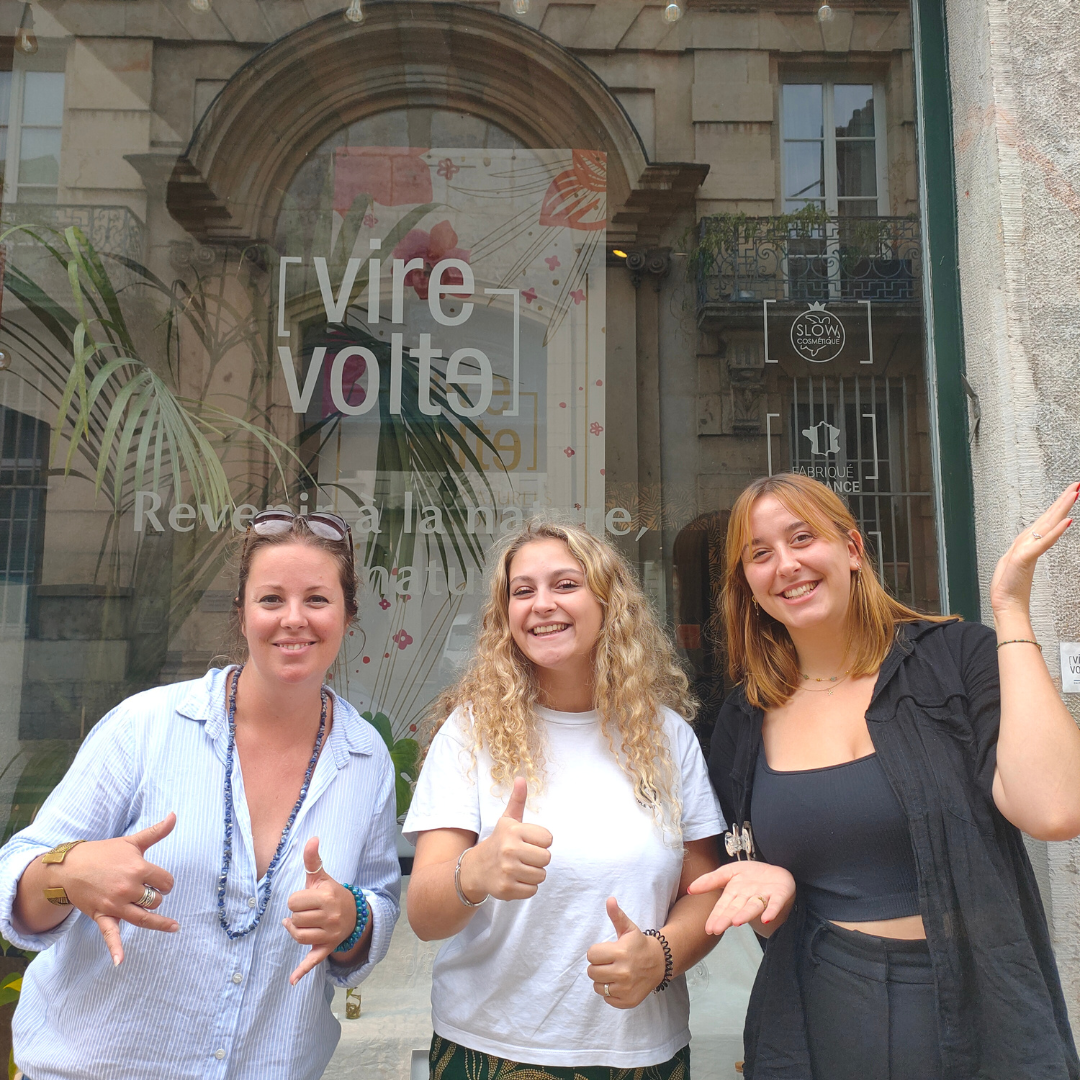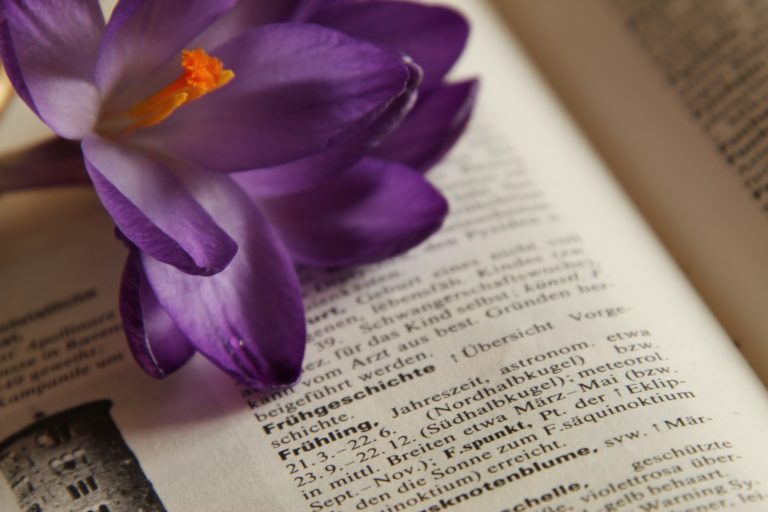
Originally
The history of perfumery intersects with the history of humanity.
The word perfume comes from the Latin per fumum through smoke. From the Bronze Age, aromatic plants and fragrant woods were burned to communicate with the deities, to honor them, feed them and carry prayers, especially during funeral rituals. Burning aromatic plants, scented woods and flowers was one of the first uses man made of fragrant plants. This smoke will give verticality to man, to have a conscience while burying his dead. This sacred practice we find it all around the globe from China to Mexico via India, Persia, from Japan to the Amazon, in Oceania.
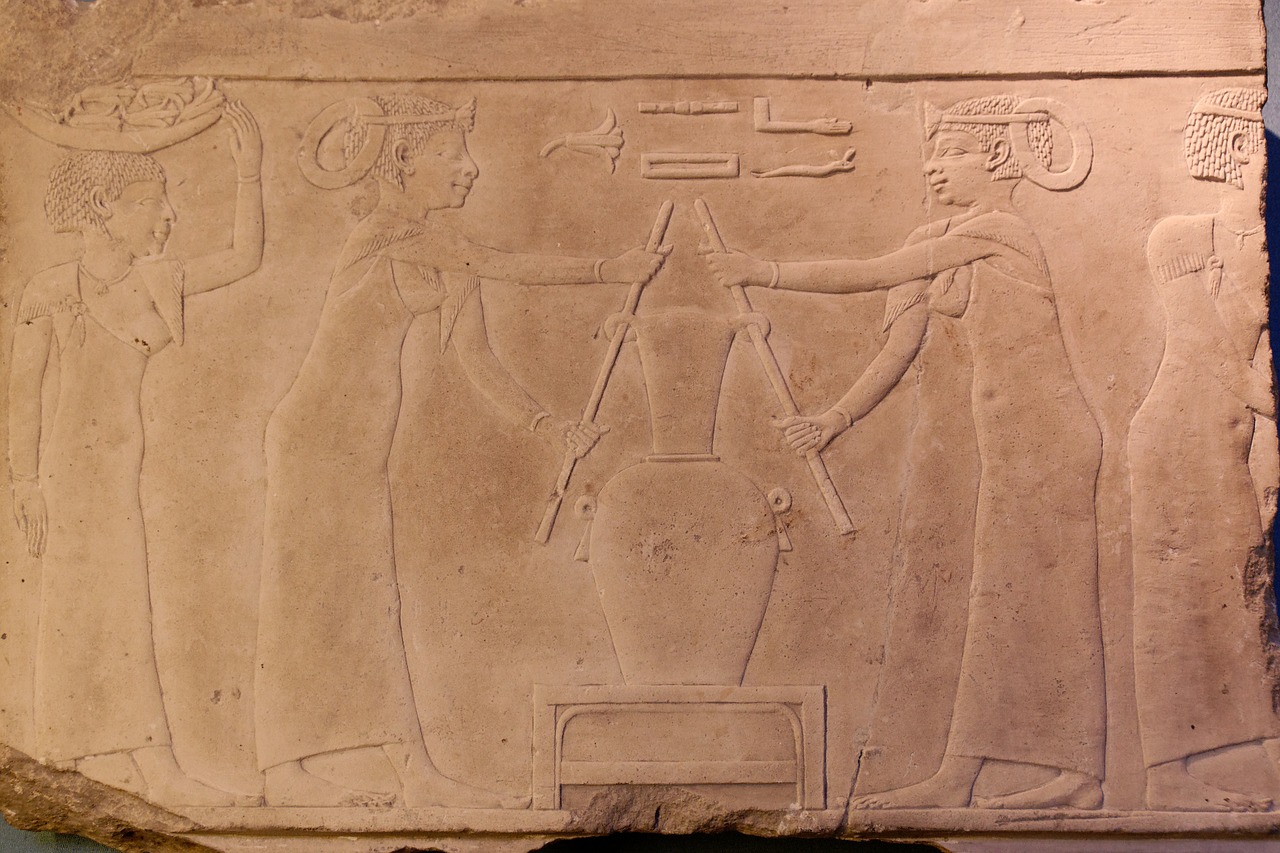
Here in Europe, we are heirs to a know-how that comes to us from Egypt. If Egypt was the cradle of perfumery, it is primarily because its religion and its ritual practices give it a considerable place. Queen Hatshepsut, 1.500 BC. JC, will organize naval expeditions to bring back from the Land of Punt called "Happy Arabia", trees with fragrant woods such as frankincense, myrrh, or pistachio terebinth to acclimatize them in Egypt. Hatshepsut had all her plants planted in the gardens on the banks of the Nile.
Daily, the Egyptians burned Kyphi, a scented oil to honor the gods. This first perfume, considered sacred and composed essentially of base notes, will be the base of the olfactory pyramid that is being created.
This use of fragrant plants in the Egyptian civilization will continue to this day... The Greek civilization, for its part, will bring, thanks to the conquests of Alexander the Great and the new roads which open towards India ( 365 BC), new aromatics such as pepper, clove or nutmeg. They are the ones who will enrich the fragrant plants with animal notes such as ambergris, civet and castoreum, and who will add it to this olfactory pyramid. We always stay in the base notes, which have a long-lasting trail and which mask very well all the miasmas of everyday life. This base of heavy fragrance scents, considered as the base note, will endure in what will become modern perfumery.
1st century AD.
The Romans will bring a floral note to the construction of the perfume. The famous heart note of the olfactory pyramid…
The frenzy of perfumes seizes imperial Rome during the holidays. A riot of smells, rose petals fall from the ceiling, spreading over the guests. The guests wear garlands and crowns, of an infinite variety: braided roses, foliage studded with lilies, narcissus or wallflowers, Egyptian-style crowns made of acanthus leaves, pomegranates or everlasting flowers or multicolored silk fabric flooded with perfume. Perfumes then become a social marker, and are very expensive.
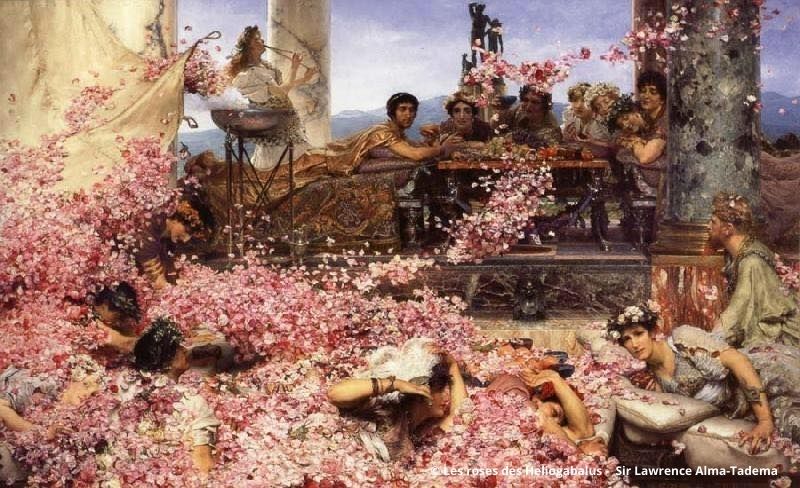
Everything is perfumed in Rome, from the walls of houses to clothes, shoes, men and women, to horses and pets. Parties, the slightest event, funerals are subject to theatricality, to an overflow of smells.
But the therapeutic function of perfumes continues to be ensured. In the first century of our era, Dioscorides, a Greek physician at the time of Nero, studied in his treatise "The Materia Medica" more than six hundred plants and their uses, and gave recipes for oils and ointments.
The Middle Ages: 465 – 1453
The growing weight of Christians in the Empire played a decisive role in the overconsumption of perfumery products. With the fall of the Roman Empire, the art of perfume disappeared in the West and took refuge in the Byzantine Empire. It was in Byzantium (Constantinople, Istanbul) that the West supplied itself with fragrant materials. The Arabs, masters of the Spices Route, will take the monopoly of this trade. The great bazaar of Byzantium will become the hub of perfume substances. This is where we will find the first gallery for perfumers, a district where the trade is intended solely for perfumery.
The use of perfume was already a social divide, which was to become more pronounced over the centuries. A fragrance laden with spice extracts, coarsely obtained animal materials, sophisticated for the nobles, simple maceration or decoction of aromatic herbs, wildflowers, for the poorest. Everyone enjoys using it.
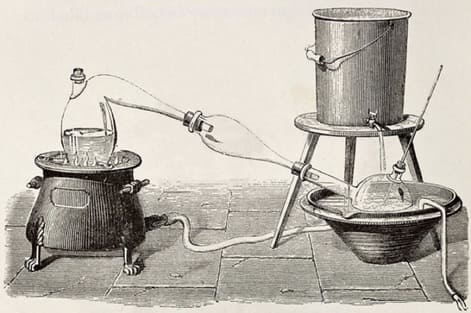
In the XNUMXth century, distillation processes became widespread with the spread of the still and alchemy and thanks to the translation of Arabic treatises translated by doctors from the School of Salernes, a university located not far from Rome.
From the Middle Ages, the gardens of the cloisters and the gardens of the princes give a very important place to medicinal plants. The virtue of drugs lies in their smell. There is no clear distinction between perfumery and pharmacy. The smell penetrates us, establishing a direct and very intimate contact. At that time, the bad smell generates the disease, the good smell fights it.
In the XNUMXth century, a new know-how was to develop in Grasse, that of master glove-makers. The trade of tanner is then closely linked to that of perfumers, these craftsmen will become the first "glove-perfumers". Gloves, shoes, belts, bags, clothes, boxes, everything is covered in scented leather. Until the XNUMXth century, skins were prepared with local aromatic plants such as myrtle and lentisk pistachio, lavender and bitter orange. Do not forget that the scents are more present there to camouflage the "bad smells", the miasma, than for seduction.
In the XIV century, Albert the Great is able, after many attempts, to give the recipe for alcohol distillation. He will call it "fiery water". It constitutes a capital contribution for perfumery by making it possible to replace oil with the traditional excipient for more than two thousand years,
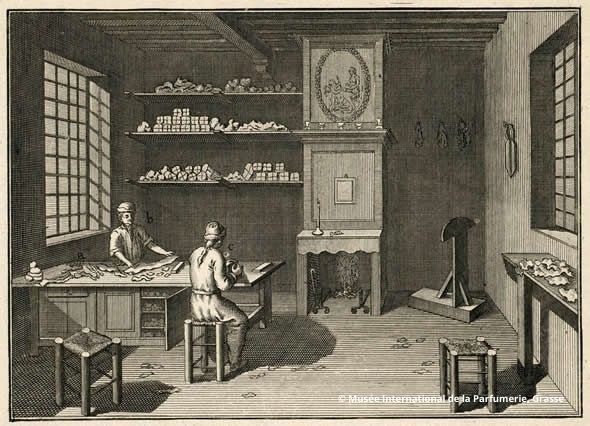
a new volatile and neutral product capable of transporting scents. It was in 1370 that the first alcoholic perfume formula known in Europe appeared. The recipe is an alcohol distillation of different aromatic plants with mostly rosemary then leaves of lemon balm, chamomile, sage, lavender flowers and a few spices, cloves and peppercorns. This water was immediately popular with women for several centuries.
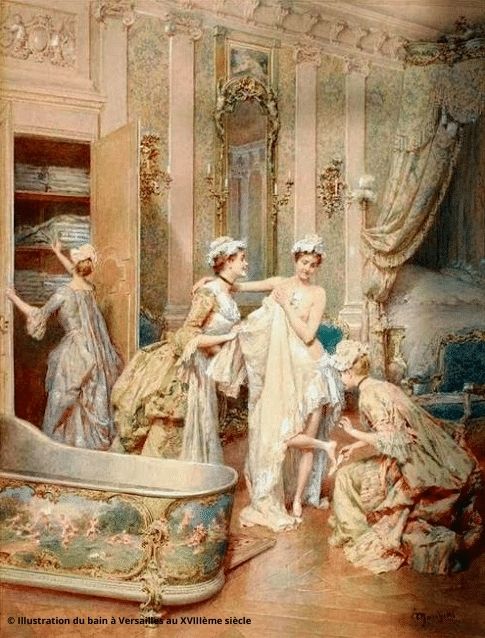
An Italian at court
In 1533, when Catherine de Medici arrived at the French court from Florence to marry Henri II, she brought her perfumer René le Florentin with her. It is at this time under the influence of Italian, that the word "perfume" arrives in the French language. It comes from a Provencal language and only appears in the XNUMXth century. They bring with them the fashion of orange trees and the scent of orange blossom. A new deal for perfumery. Catherine de Medici wears perfumed jewelry such as "the apple of amber", hanging from her belt, in the shape of an apple, chiselled in silver that can contain perfumed fatty substances, "a pomander", a small object on a foot that the we pose from which emanates fragrant effluvia. René le Florentin is going to open the first store in Paris where all kinds of products are sold: flavored waters, violet powder, lemon Bologna soap, lavender toilet vinegar, ginger mouth drops, oil for the rose or jasmine body. The store is always full. The top note, composed mainly of citrus, will oversee the pyramid of perfumers and lead to the composition of perfumes as we still know them today.
It will complete the heart note those composed of flowers, and the base note composed of oriental fragrances such as amber, musk or sandalwood, vetiver or patchouli. Citrus fruits, which are luxurious because they are rare, arrive later on the European market.
cologne
At the end of the XNUMXth century, the bitter orange tree, the bitter orange tree, entered into a perfumed water, called “Aqua admirabilis” produced at the convent of Santa Maria Novella in Florence. It is composed of essence of bitter orange tree, citron, bergamot and lemon, rosemary, lemon balm, lavender and neroli flower. A man named Feminis, itinerant merchant-drogue peddler, goes to buy this water at the convent. He arrives in Cologne where part of his family resides. Having no heirs, Feminis passed on this recipe to his grand-nephew, Gian Maria Farina, who already owned a small distillery. The latter will redo this recipe and give it the name Aqua admirabilis Colonae. It was not until the following century that eau de Cologne experienced truly European distribution.
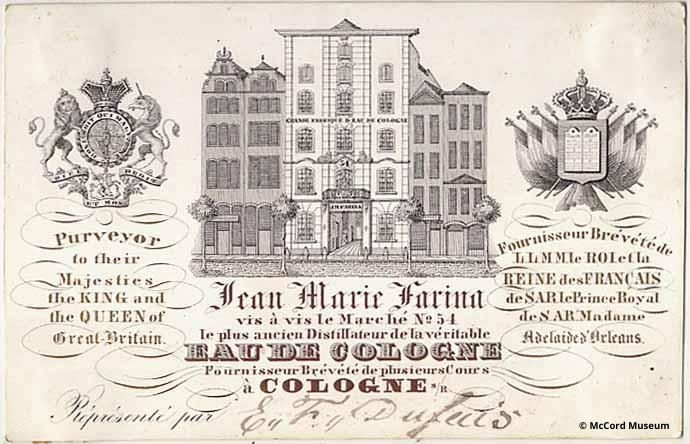
During the Seven Years' War which from 1756 to 1763 opposed all the great countries of Europe, the French troops occupied Cologne and found at JMFarina this perfumed water which they sprinkled on themselves to treat their wounds and fight against illnesses. They bring this water back to France and it will immediately achieve great success.
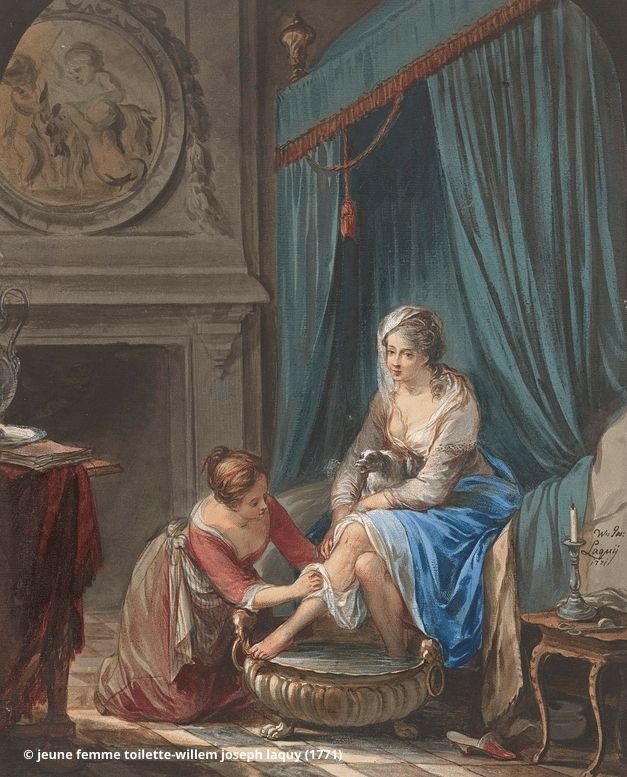
The fragrant courtyard
The Cours de Versailles is nicknamed the Cour Parfumée due to an abundant consumption of perfumes. The court uses and abuses scented products. The wigs are powdered with many finely ground ingredients, mainly Florence iris rhizone, rose, coriander, tiger nut root, cloves. The most used flowers are jasmine, rose, hyacinth, and orange blossom. Then come the powders with ambrette (the flower), frangipane, iris... These floral notes are sometimes reinforced with musk or civet and amber essence...
Therapeutic scented waters were very fashionable in courts in the XNUMXth century.
The strong demand for perfume from the court led France to develop its own production. It is thanks to the favorable climate of the south that the raw materials were planted in the Grasse region. Since that day, this place is considered the capital of perfumery.
After the revolution many perfumeries opened in Paris and Rue du Faubourg Saint Honoré became the new luxury district.
JFHoubigant sets up shop there and sells his geranium-scented oil and his famous snail rose cream. PFLubin opens its perfumery “with the arms of France” in the same district. In March 1791, a decree dissolved the corporation of glovers and perfumers. Perfumers feel freer and will demand better product quality.
After the revolution many perfumeries opened in Paris and Rue du Faubourg Saint Honoré became the new luxury district. JFHoubigant sets up shop there and sells his geranium-scented oil and his famous snail rose cream. PFLubin opens its perfumery “with the arms of France” in the same district. In March 1791, a decree dissolved the corporation of glovers and perfumers. Perfumers feel freer and will demand better product quality.
Early XNUMXth century, Napoleon, eager to protect users of harmful drugs, will decree the separation of perfumery and pharmacy in 1810. Perfumers must then stop praising the medicinal virtues of their compositions. The ingredients and their dosages must be written on the bottles in order to avoid the circulation of false Eau de Cologne.
It was at the end of the XNUMXth century that modern perfumery was born with the first synthetic molecules. Perfumery becomes the artistic mode of expression of chemistry and the last tie that linked perfume to nature will be broken with the synthesis of odorous molecules.
The perfumer's palette then expands to infinity. It mixes natural molecules with new synthetic fragrances. Like the musician, the perfumer will look for chords and compose from top, heart and base notes, which will constitute the score of his creation.
We can say that François Coty is the father of modern perfumery in France. He opened his shop in 1901, he wanted at all costs to adhere to modernity. He stayed in Grasse to learn about natural materials and synthetic products.
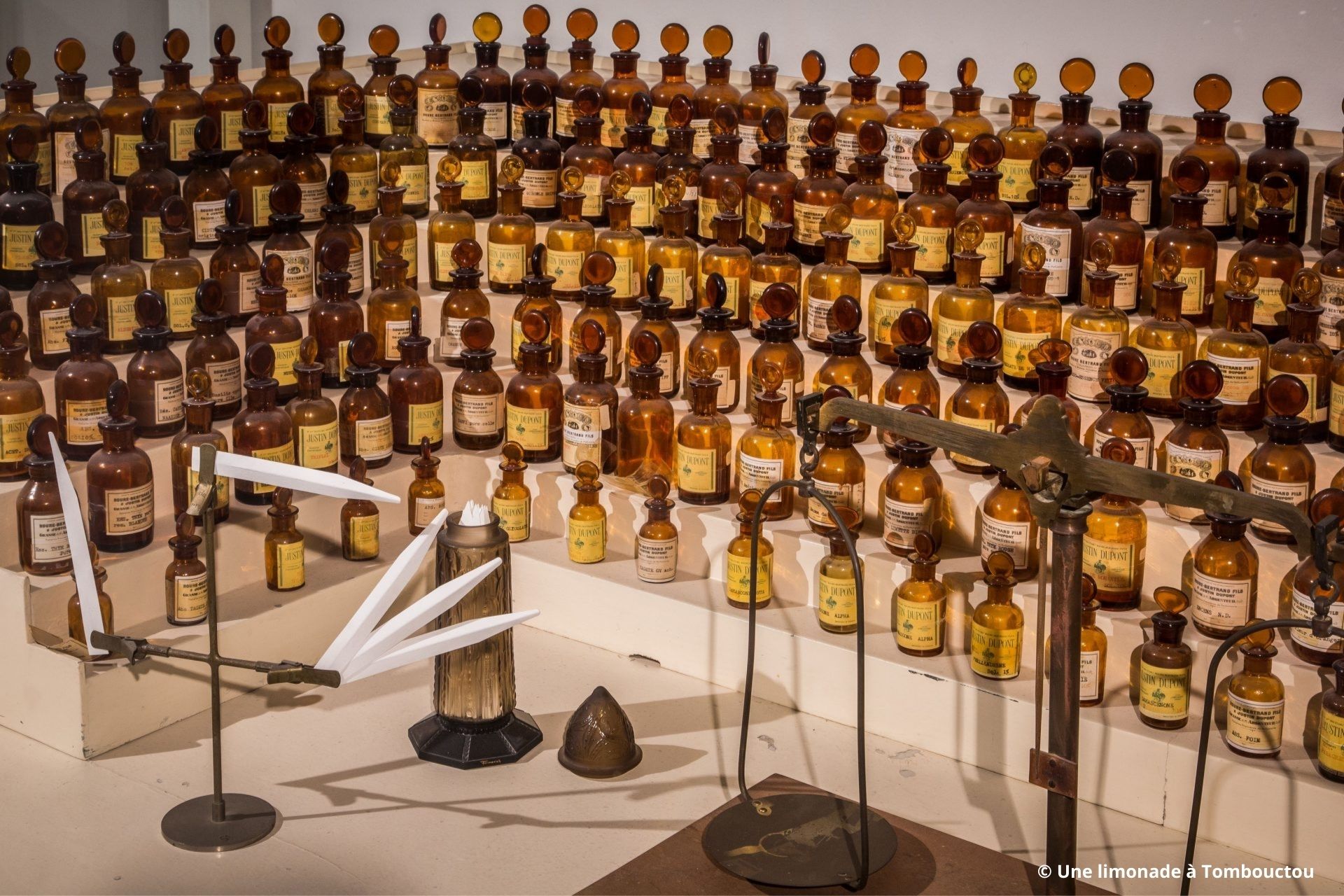
He created the famous “Cyprus” perfume in 1917, which gave the name to a large olfactory family whose trail is reminiscent of damp undergrowth. He is the first to create an osmosis between the perfume, its bottle, its name and the image it conveys. Her work goes towards the democratization of perfume by the reproduction of the same perfume in a large number of copies, by the significant use of advertising and by communication close to the consumer.
Perfume at the dawn of the XNUMXth century, a combination of nature and synthesis
At the beginning of the XNUMXth century, chemists tried to penetrate deep into natural perfume. As for perfumers, they will have one constant: to create a product whose smell characterizes the perfume. Perfumers appreciate synthetic notes for their stability, their olfactory power, the extent of their palette but also because they allow greater production. Coty, the father of modern perfumery, wants high quality natural scents for women. Synthesis presents for him the stability of quality. The perfumes must constitute "an emanation of the soul of the woman" For this he associates natural raw materials qualified as noble and associates them with synthetic products that he uses massively to obtain a subtle dosage, clarity, modern balance.
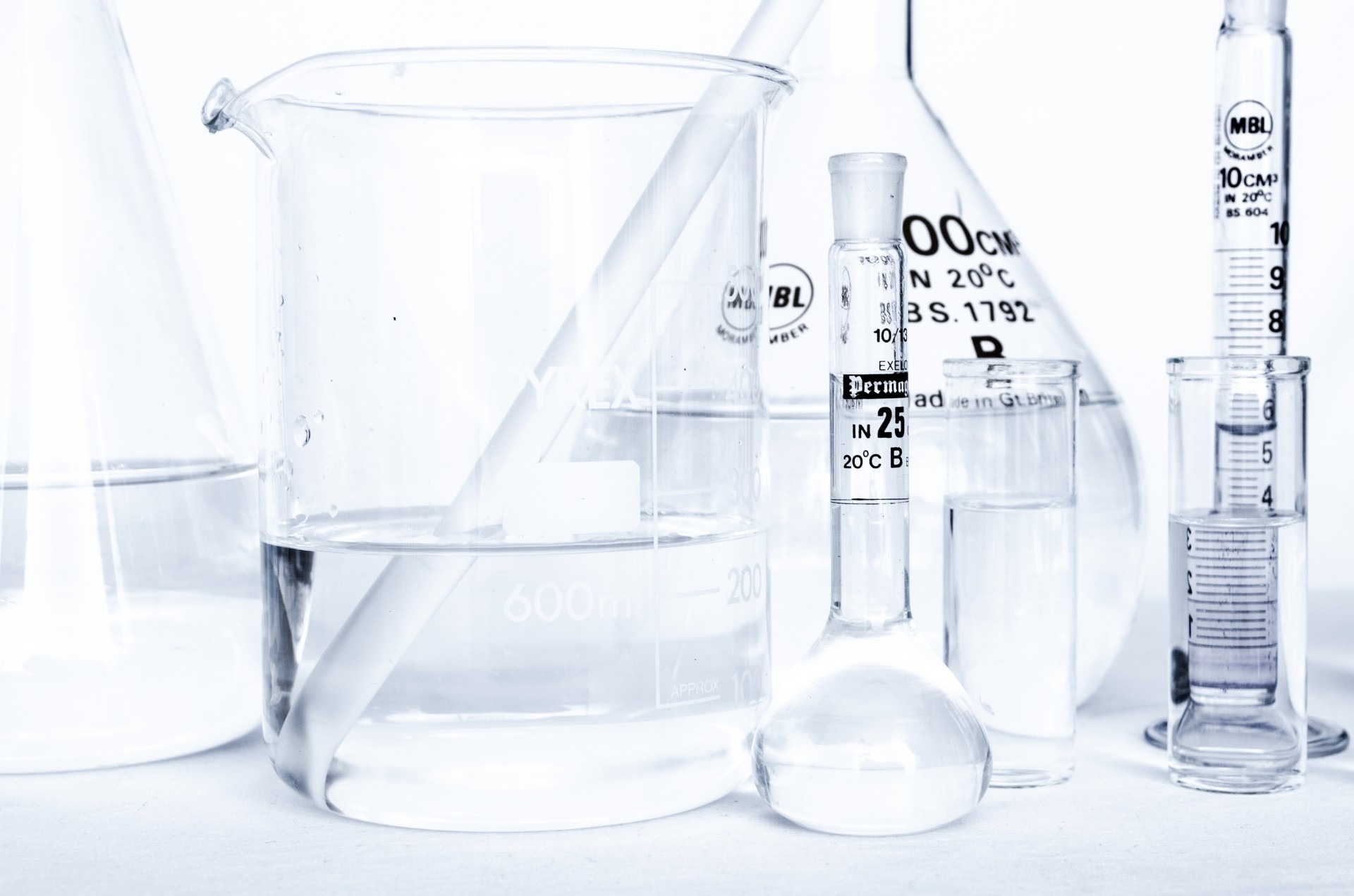
The era of cloning, globalization
At the end of the 1990s, cloning appeared, the reproduction of a unit, of a scent reproduced ad infinitum, which was on the rise to respond to globalization. The new technologies of the extraction methods will try to be as close as possible to the flower and other fragrant sources. They will reproduce by its analysis the smell of a single flower trapped on its place of culture, using synthetic molecules to infinity, that is to say to a globalized commercial reproduction.
We are definitely moving away from flowers picked in a field, each with its own fragrance that makes up the richness of authentic perfumery.
Based on research by Tachka Sofer
References:

End of the Virevolte adventure
Do not hesitate to consult the list of our resellers if you wish to buy one of our perfumes.
Julie Desoomer
